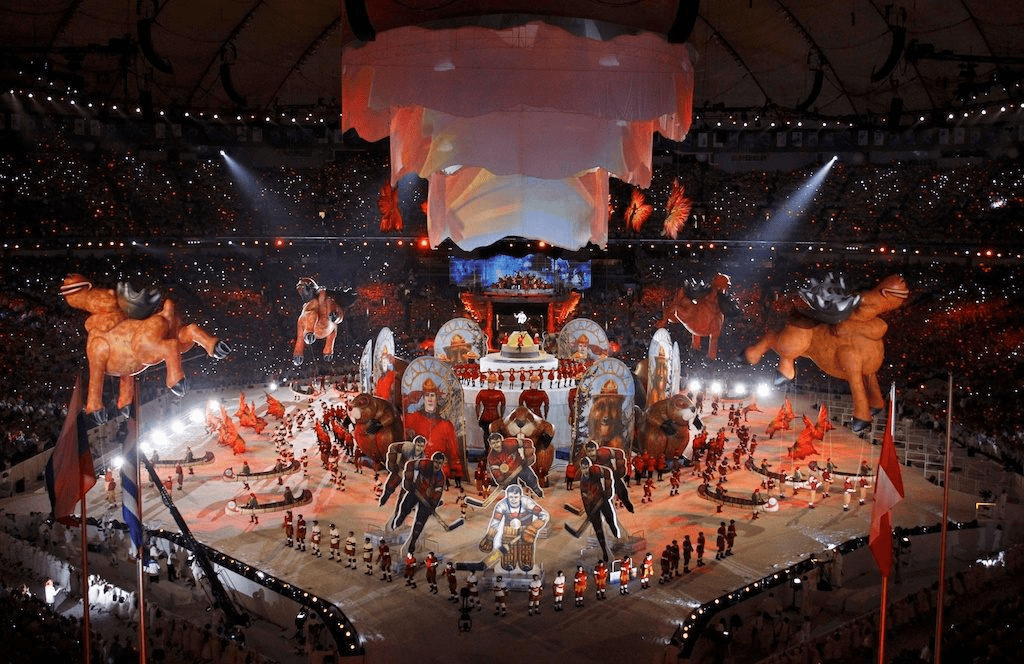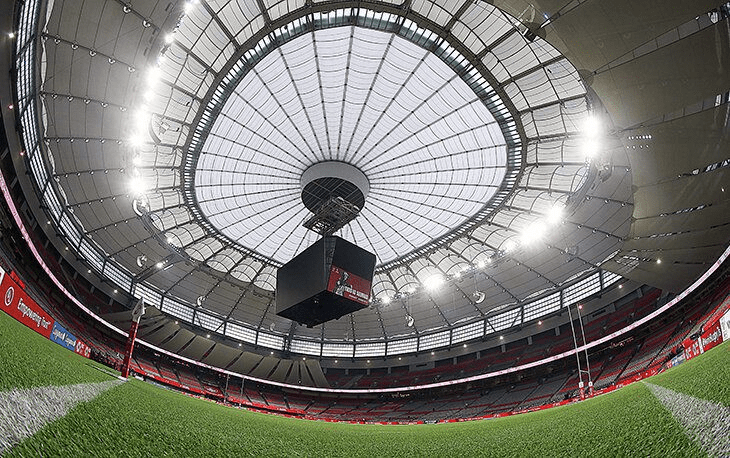Not only hockey but also football is popular in Canada. Find out how the BC Place arena was built and developed in our article. More on the website vancouver-future.

History
The idea of building a stadium arose in the late 70s of the twentieth century, it was proposed by Erwin Swangard. There was conducted a research, and the Premier of British Columbia Bill Bennett approved the construction of a sports facility, and money was provided for it. It was intended not only for sports, but was also included in the list of “Expo 86” facilities. It gave the industrial area surrounding the arena a chance to be transformed. In addition to the stadium, the necessary infrastructure, roads and water supply were created.
The construction of the building was estimated at 126 million dollars. The idea was perceived differently by the citizens, there were many people who criticized the idea for its high cost. The roof of the arena was inflated by an air pump and kept in the air by 16 giant fans, making it the largest air-supported dome in the world. The sports facility covered 10 acres and its circumference was 750 meters.
The opening ceremony took place on June 19, 1983. The next day the first match took place. Football club “Vancouver Whitecaps” played with ” Seattle Sounders” and won with a score of 2:1. That match was attended by about 60,000 people.
It is worth saying that the area around the stadium after the opening was still industrial, there was a timber factory and a cooper shop.
In 1986, the opening ceremony of “Expo” was held at this magnificent stadium. The event was attended by 7,000 performers and more than 50,000 guests.
Problematic was the inflatable roof of the stadium. In 1996, a snow storm almost tore the roof off.
11 years later, the same snow storm triggered the steam heating system alarm. Unfortunately, by the time it was activated, the pressure in the roof had increased dramatically, causing the panel on the west side of the stadium to collapse.
It took about two weeks to repair and re-inflate the roof, and it became clear that a long-term solution to the problem needed to be found.
In 2008, British Columbia Premier Gordon Campbell announced plans for the replacement of the reinforced steel roof. The repair budget left $563 million, the most expensive in Canadian history.
There was the opening and closing ceremonies of the 2010 Winter Olympic Games, after which a large-scale repair of the roof began. About 5000 people worked at the facility.
In 2011, a large-scale reconstruction was completed. The new roof is supported by 36 steel masts and consists of a large hub and spoke system. It can withstand up to 200 kilograms of snow per square meter, and thanks to a special inflatable layer, the shape is preserved and the snow is thrown off.
The roof is formed of 3 parts: a fixed fabric over the seats, a ring of glass and a translucent fabric over the field, which takes just under 20 minutes to open.
They also made new sound systems, updated seats in the stands, more seats for groups with limited mobility and a unique four-sided scoreboard suspended in the center.

Contemporaneousness
Vancouver Whitecaps football club, playing in the popular combined (US and Canadian) MLS league and the BC Lions of the Canadian Premier League, returned to the stadium after renovations.
In 2015, the arena accepted the FIFA Women’s World Cup, including the final, as well as qualifying matches for the 2018 FIFA Men’s World Cup.
And in 2026, the stadium will host matches of the “World Cup”, which will be hosted by 3 countries: Canada, USA, Mexico.
Not only football events take place at B.C. Place, but also other sports. In 2014, it hosted a special outdoor NHL game between the Vancouver Canucks and the Ottawa Senators. In addition, the arena hosts a large number of performances by world stars.